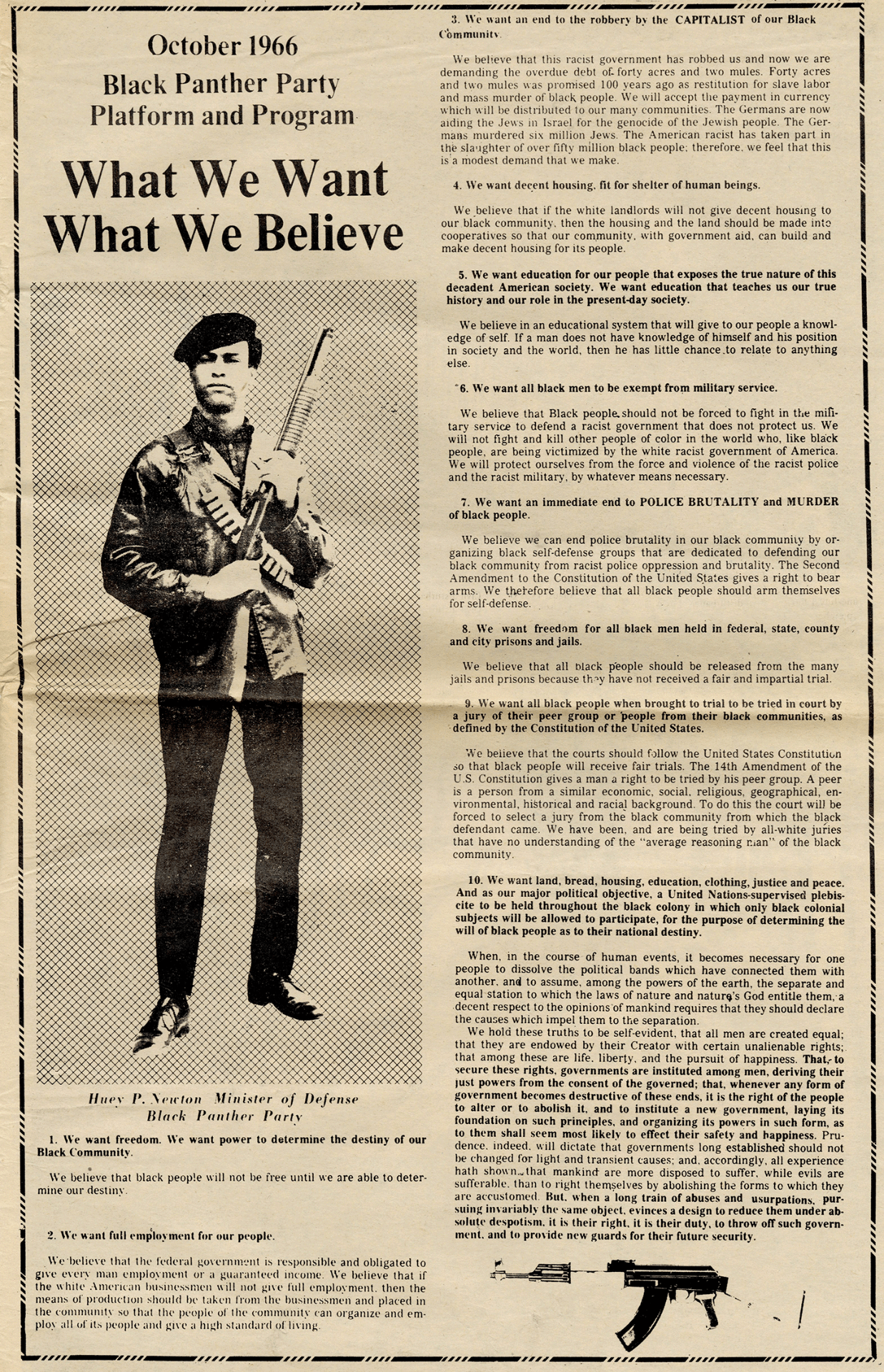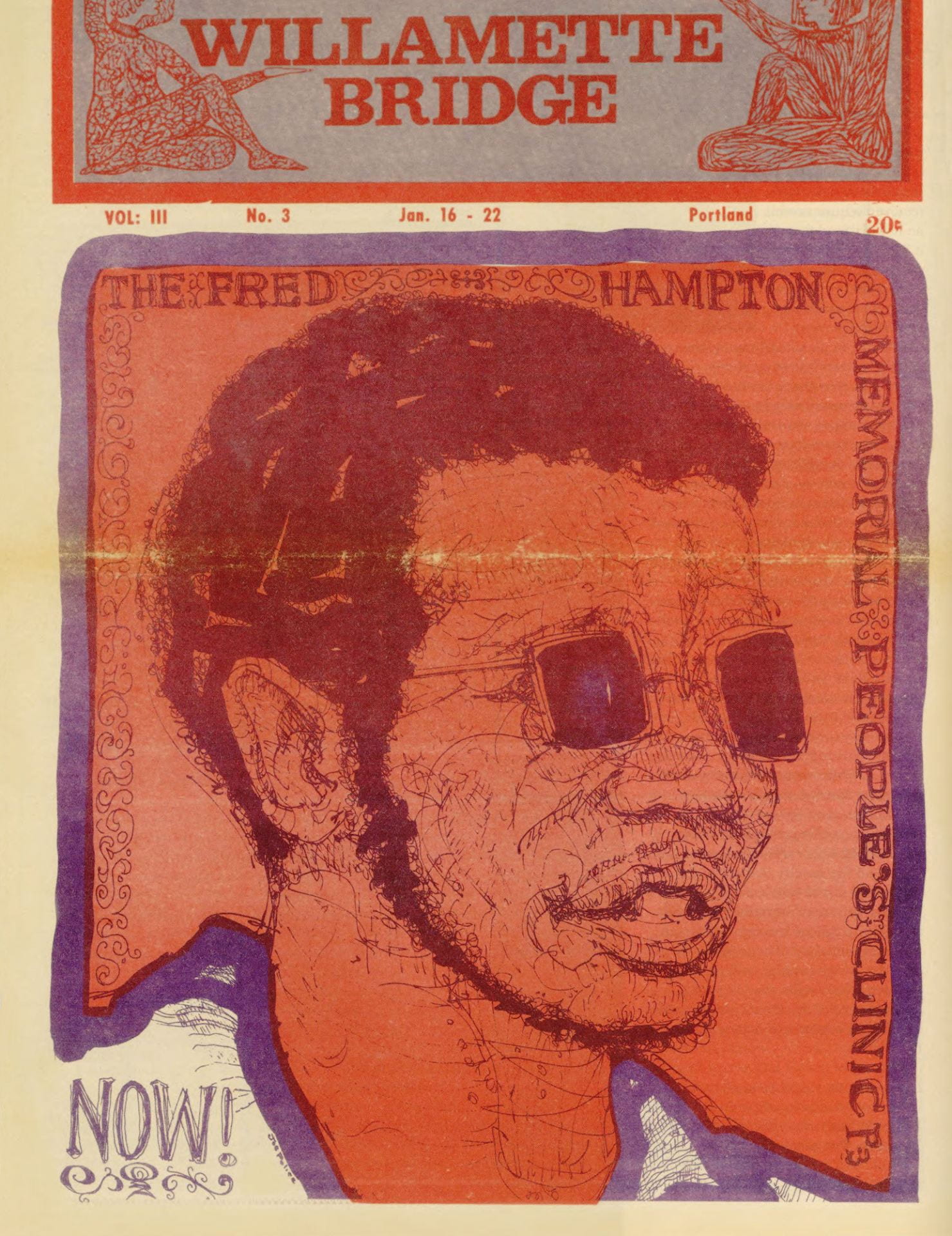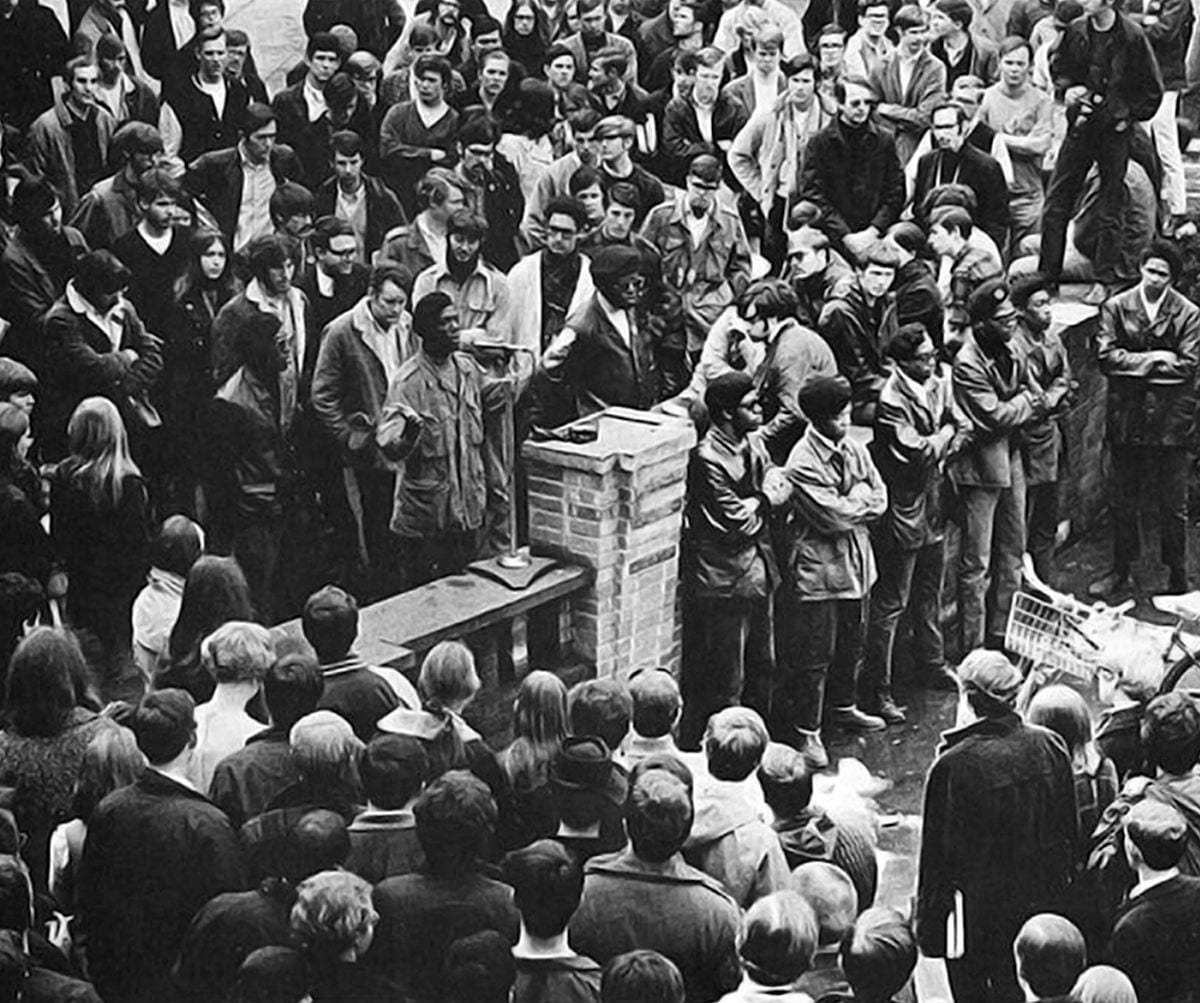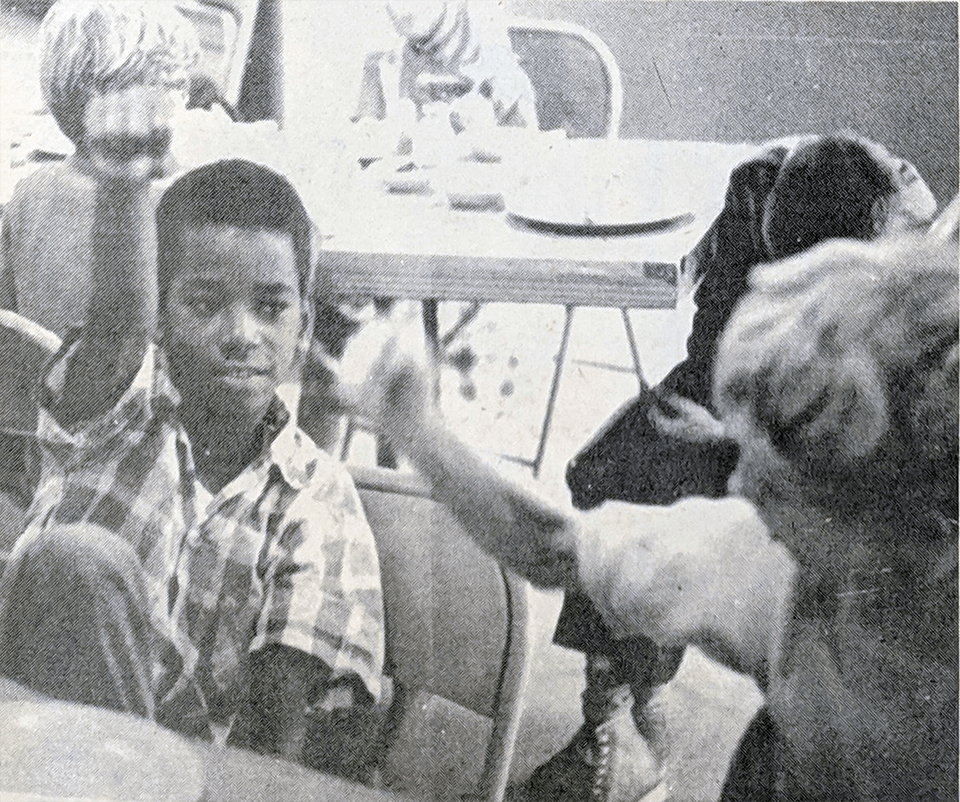In Defense of
Self
Defense
The Black Panther Party for Self-Defense Ten-Point Platform is a set of guidelines stating their ideals and operations—a document the Panthers called “a combination of a Bill of Rights and a Declaration of Independence.”
Image credit: Special Collections and College Archives, Skillman Library, Layfette College
In 1966, in Oakland, California, Huey Newton and Bobby Seale formed the Black Panther Party for Self-Defense. The party’s Ten-Point Platform listed goals of equality in employment, housing, and education as well as freedom for political prisoners and an end to police brutality. Over forty chapters sprang up across the county with one in Eugene and one in Portland.
Underground radical newspaper Willamette Bridge celebrated the opening of the Fred Hampton People’s Free Health Clinic in 1970. The Willamette Bridge had connections with the Black Panthers, draft resistance, and radical groups, and it offered a forum for the Women’s Liberation, Gay Rights, and Environmental movements.
Image credit: Oregon Black Pioneers
Oregon’s First Black Panther Party
The Black Panther Party was active in Eugene from 1968–1970. Some Panther members were UO students and active in the Black Student Union (BSU). While the BSU focused on issues related to campus life, the Panthers sought to address problems within the greater Black community.
The Eugene Black Panther Party membership was about 20 members with 15 underground members. Howard Anderson was the Captain and Ray Eaglin, the General.



